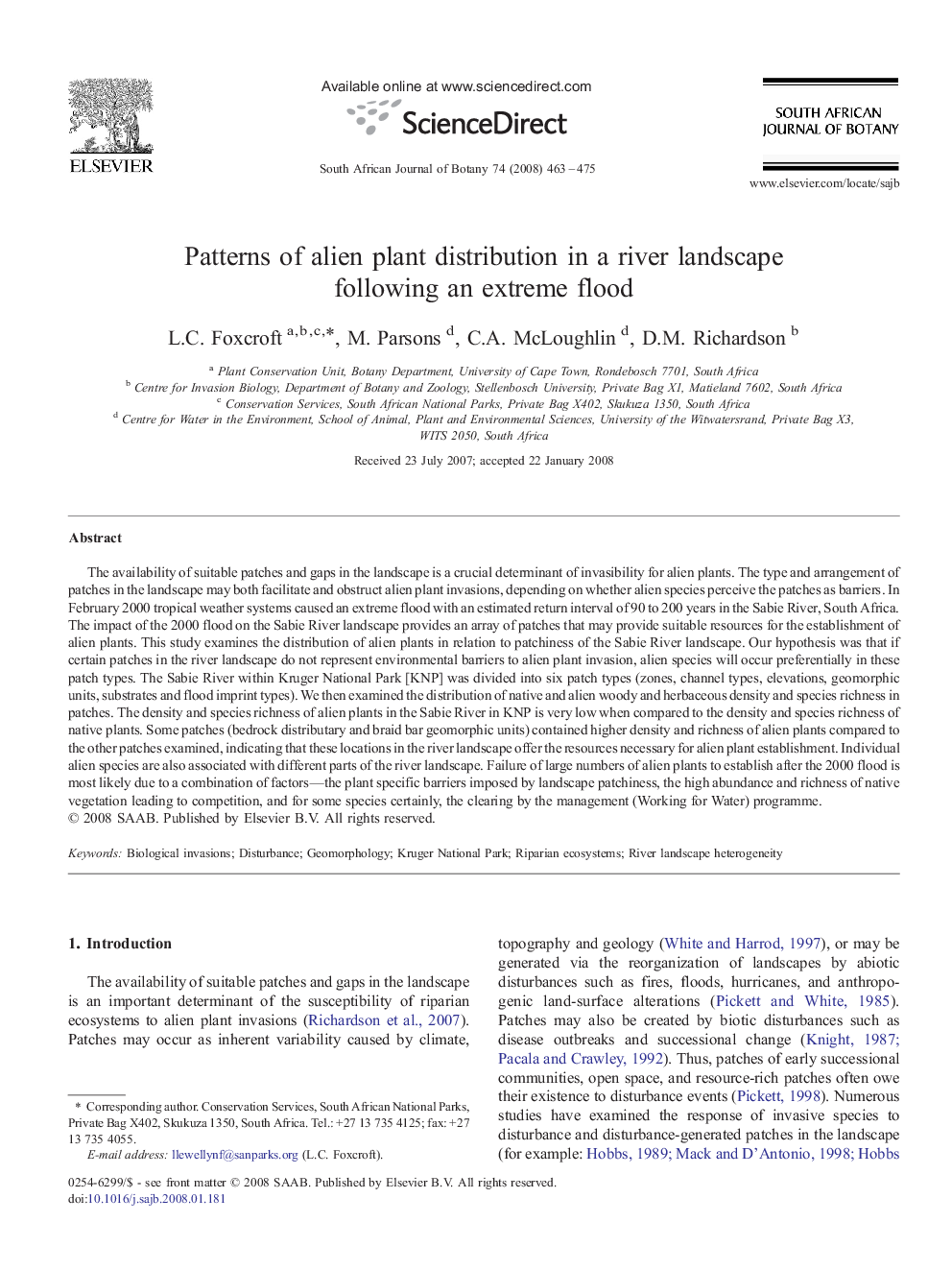| Article ID | Journal | Published Year | Pages | File Type |
|---|---|---|---|---|
| 4521491 | South African Journal of Botany | 2008 | 13 Pages |
The availability of suitable patches and gaps in the landscape is a crucial determinant of invasibility for alien plants. The type and arrangement of patches in the landscape may both facilitate and obstruct alien plant invasions, depending on whether alien species perceive the patches as barriers. In February 2000 tropical weather systems caused an extreme flood with an estimated return interval of 90 to 200 years in the Sabie River, South Africa. The impact of the 2000 flood on the Sabie River landscape provides an array of patches that may provide suitable resources for the establishment of alien plants. This study examines the distribution of alien plants in relation to patchiness of the Sabie River landscape. Our hypothesis was that if certain patches in the river landscape do not represent environmental barriers to alien plant invasion, alien species will occur preferentially in these patch types. The Sabie River within Kruger National Park [KNP] was divided into six patch types (zones, channel types, elevations, geomorphic units, substrates and flood imprint types). We then examined the distribution of native and alien woody and herbaceous density and species richness in patches. The density and species richness of alien plants in the Sabie River in KNP is very low when compared to the density and species richness of native plants. Some patches (bedrock distributary and braid bar geomorphic units) contained higher density and richness of alien plants compared to the other patches examined, indicating that these locations in the river landscape offer the resources necessary for alien plant establishment. Individual alien species are also associated with different parts of the river landscape. Failure of large numbers of alien plants to establish after the 2000 flood is most likely due to a combination of factors—the plant specific barriers imposed by landscape patchiness, the high abundance and richness of native vegetation leading to competition, and for some species certainly, the clearing by the management (Working for Water) programme.
